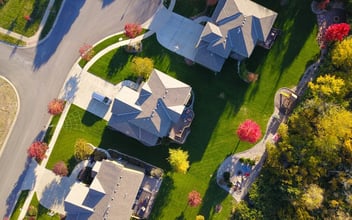Easement vs License

We often have clients who ask us to prepare an easement for them when perhaps a license would be more appropriate. The difference between the two can be confusing.
An easement is an interest in land that typically lasts indefinitely but can be limited to a specified period of time or until a future event happens. A license grants permission for someone to use land and, unlike an easement, does not convey an interest in land – it just gives permission for the use of land. It is personal to the person receiving it and cannot be transferred to someone else. It is usually revocable at will meaning it can be terminated at any time.
Suppose your good friends, Dick and Jane, live next door. In refinancing their mortgage, they discover that the privacy fence between your property and theirs is constructed two feet over the property line into your property.
They ask you to allow the fence to remain where it is. There are two ways to accomplish this: You could give them an easement or a license.
If you want to grant permission only to Dick and Jane and do not want to be obligated to a future property owner who might purchase their property, you could give Dick and Jane a license. The license could be prepared so it permits the fence to remain in place until the end of its useful life. When the fence is removed or reconstructed, the license could end and require the fence to be moved back to the property line. A future owner could not rely on the license to keep the fence where it is currently located. It would only allow Dick and Jane to keep the fence in its location.
If you are okay with allowing the fence to remain in place even if Dick and Jane sell their house, you could grant them an easement. An easement is permanent and transfers to future owners. If you hear lawyers use the term “runs with the land” they mean that the easement will transfer to future owners of the land it benefits. The easement would mean that if Dick and Jane sold their property, the future owner could rely on the easement to keep the fence in its current location.
The easement could still be prepared to last only for the useful life of the fence and require that the fence be re-built on the property line at the end of its useful life. In this example, the primary difference between the easement and license is that the license is personal to Dick and Jane and will not be available to future owners of the next-door property.
When we prepare a license or an easement to deal with encroachments such as a fence or driveway, we often include a boundary line agreement.
A boundary line agreement locates the boundary line between two adjoining properties. It is sometimes necessary when an encroachment has been in place for several years. For instance, if Dick and Jane’s fence has encroached onto your property for ten or more years, they might have acquired title by adverse possession to the portion of your yard on their side of the fence.
Adverse possession is a legal principal which allows a party to acquire title to another person’s property, i. If the party claiming adverse possession has openly used the property in a way that is hostile to the use of the property by its legal owner. In the Dick and Jane hypothetical, that could mean that Dick and Jane could acquire title to the two feet of your yard on their side of the fence if their hostile use has continued for ten or more years.
To eliminate a claim of adverse possession, we often require that, as a condition for allowing the encroachment to remain, the party adversely using property agree that the common boundary is the original property line. We will further require that they give up any claim to the property they have been using.
In the Dick and Jane hypothetical, the boundary line agreement would establish the lot line between the two properties as the agreed boundary line. We would require that they quit claim any interest they might have acquired back to you.
If you learn that your neighbor is using a portion of your property because the fence between the properties is not in the correct location or a driveway or sidewalk encroaches onto your property, it is important to address the problem. Doing nothing and letting the encroachment remain could cause the loss of your property. Granting an easement or license eliminates an adverse possession claim. To acquire title by adverse possession, the use of property has to be “open and hostile” to your use. By permitting your neighbor to use the property, the hostile use is eliminated because you have permitted their use of the property.



